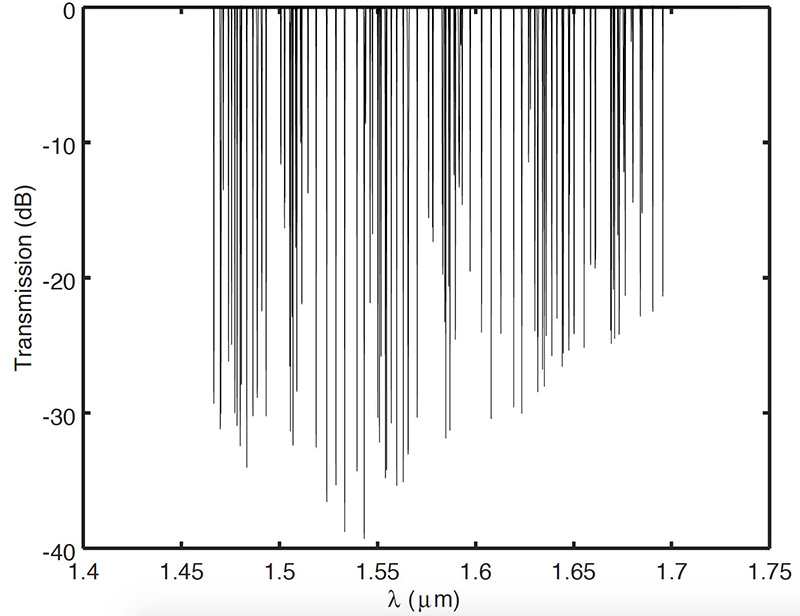Sky Emission Filters
Low-mass stars and brown dwarfs emit a substantial fraction of their light at NIR wavelengths and NIR spectroscopy is the most efficient way to study these objects [Proc. SPIE 8446, 84463J (2012)]. As optical and ultraviolet emission lines from distant galaxies are red-shifted to NIR wavelengths due to Hubble expansion, NIR spectroscopy is an important method for studying the early universe.
However, deep NIR observations from the ground based telescopes are extremely difficult to make due to the presence of bright atmospheric background in the range 0.9–1.8μm caused by the de-excitation of atmospheric hydroxyl (OH) molecules at an altitude of ~90 km. The NIR background is thousands of times brighter than the light from the objects of interest for astronomers. Due to fluctuations on short timescales, the subtraction of sky background from astronomical observations is a non-trivial task and a challenge in observational astronomy.
Suppression of the sky OH emission can be achieved using aperiodic fiber Bragg gratings (AFBGs) inscribed in special Ge- or B- doped, or hydrogenated optical fibers. Bragg gratings are inscribed in the core of optical fibers by carefully controlling the variation of refractive index of the core. AFBGs filter out a selection of wavelengths (matching the OH emission lines) passing through the fiber. AFBGs can provide strong reflections (transmission < −30 dB) over very narrow widths (< 200 pm), whilst maintaining high throughput between the reflection notches (losses < 0.5 dB).
Traditional methods of fabricating a complex fiber Bragg grating involves using AOMs or EOMs in a modified Talbot configuration, or using a femtosecond laser to fabricate the grating via line-by-line (LnbLn) or point-by-point PbP process. The former two techniques involve a “running light” effect where the interference pattern moves along with the fiber to generate a complex and long grating in the fiber. The complexity of the optical alignment and synchronization in the above three methods are non-trivial and challenging when it comes to reproducibility and accuracy.
The Astrophotonics group at innoFSPEC is currently developing alternate methods, as well as employing the traditional methods for fabricating aperiodic gratings.
